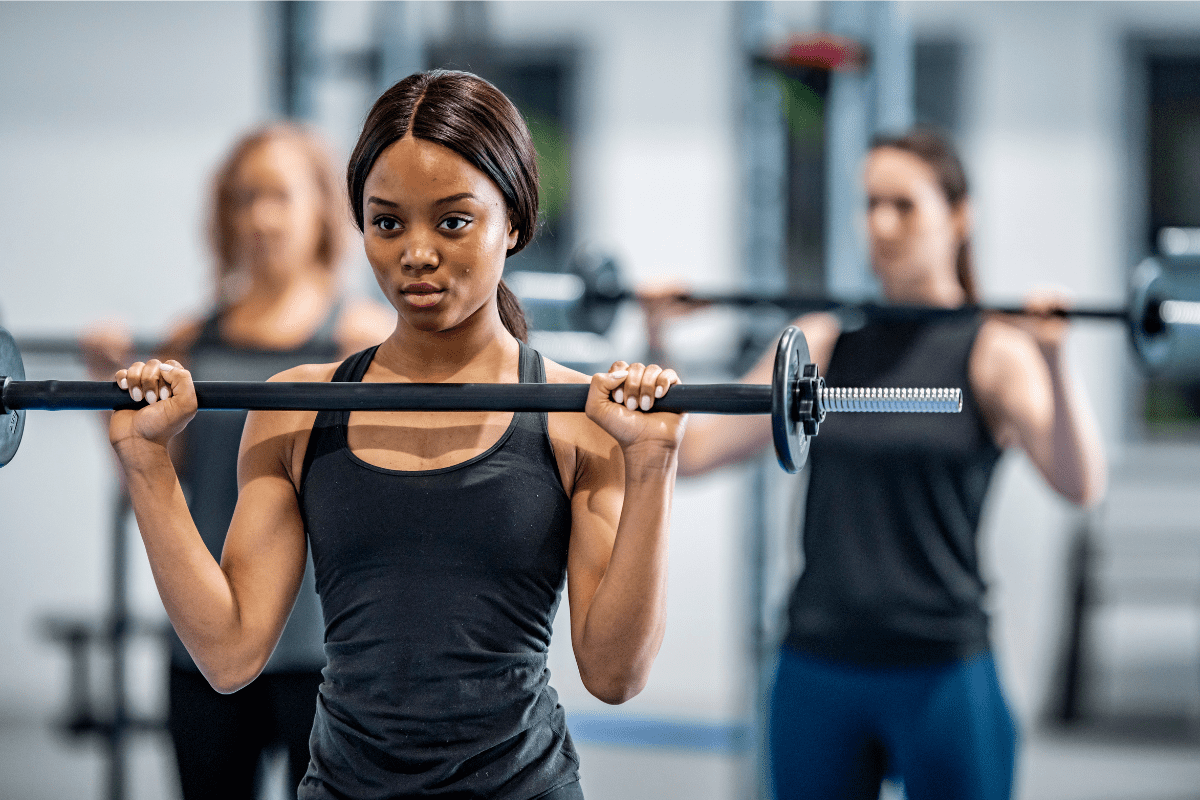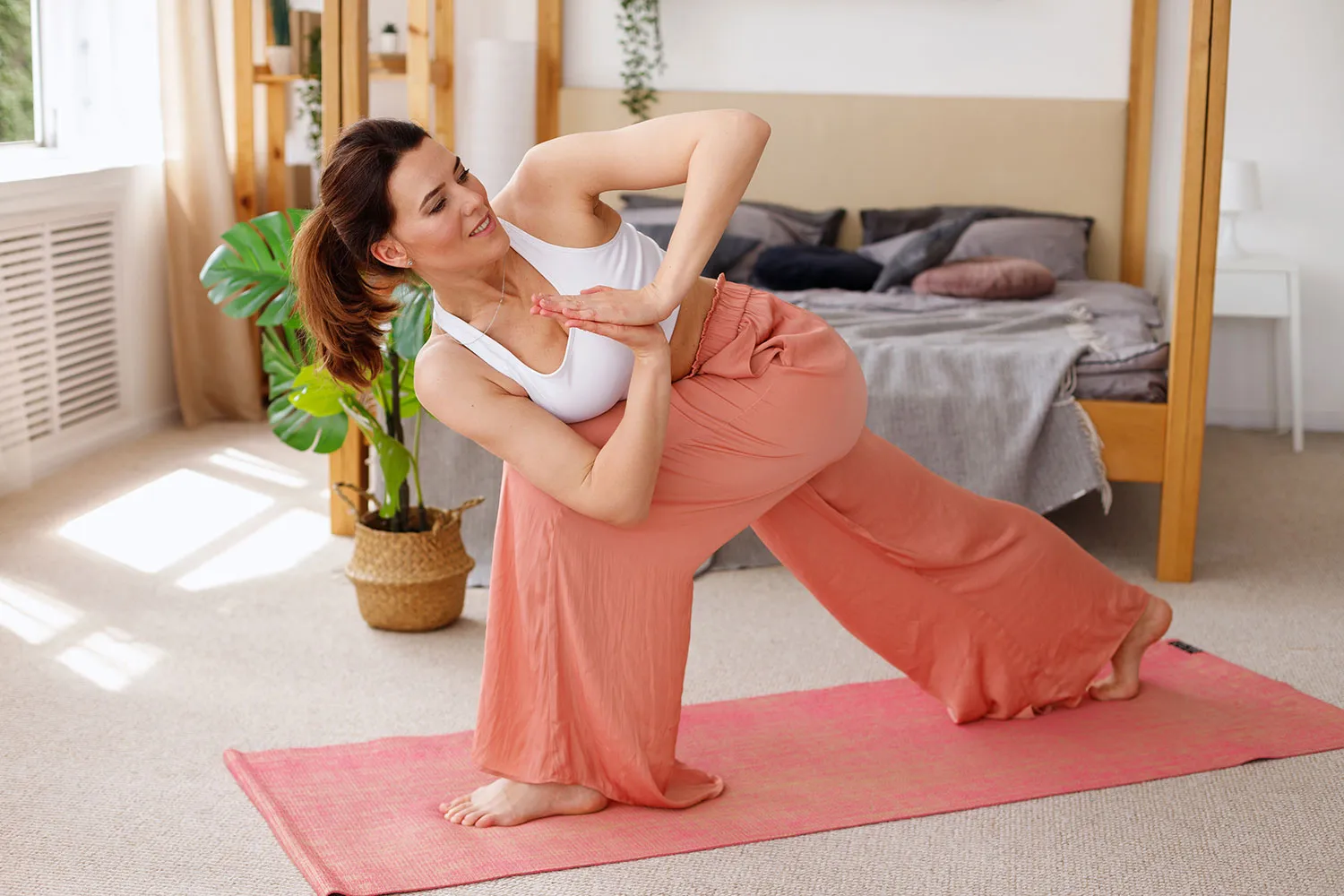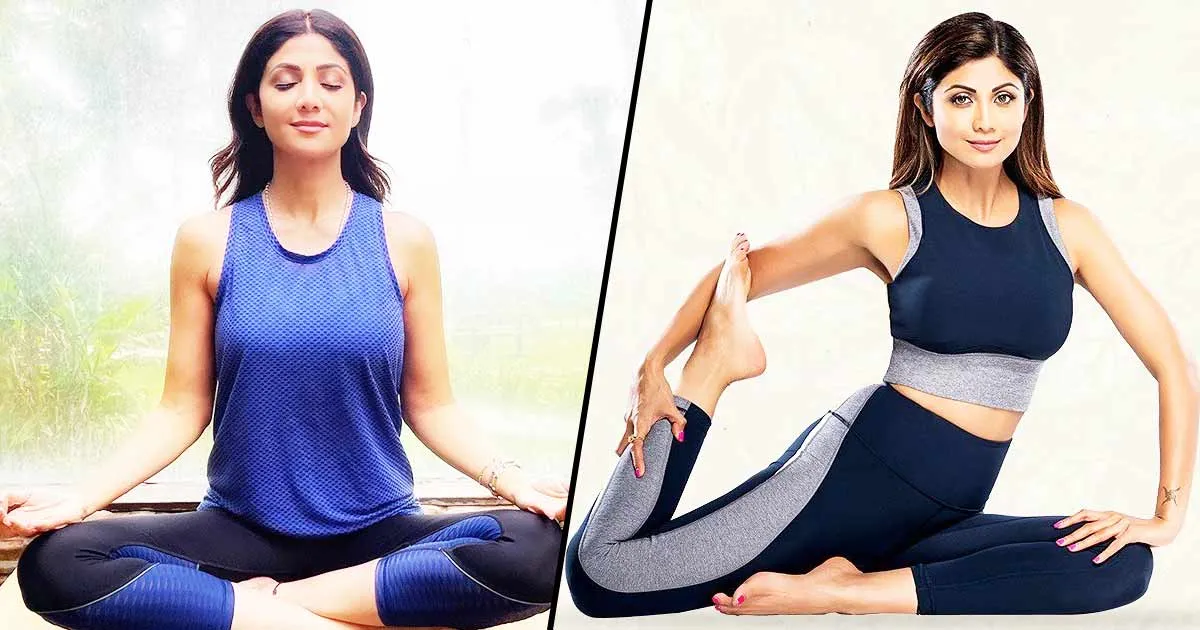
A Complete Guide On How To Do The Reverse Biceps Curl
By Rashmi Goel
The best arm training goes beyond simply ripping through a few biceps curls and triceps press downs. It is important to follow a method if you want to achieve more than just building a pump that merely appears in the mirror. The arm training regimen does not require a lot of complexity, however, it is imperative that the physical structure of the muscles should be understood in order to ensure complete development. Biceps and triceps are two key muscles in terms of arm size; however, curls are generally performed with a supinated (palm-up) grip, which emphasizes most, but not all, of the biceps muscles, making them only half of the answer to developing the biceps. A reverse biceps curl is an excellent exercise for developing your entire arm, including your forearms, which is why you should include it in your arm training routine. Here's how this seemingly simple, but incredibly useful, curl variation works.
How To Perform A Reverse Biceps Curl
Biceps curls are typically performed with supinated, or underhand, hand positions. Standard curls are performed with your palms facing away from your body at the bottom and toward your body at the top. In reverse curls, however, you "reverse" the grip and hold your hands overhand, aka palm down, or pronated. At the bottom of the exercise, your palms should face toward your body, and at the top, they should face away from your body. While holding no weights, make fists and perform both curling movements. Having your arms fully flexed before you lift them will make a difference in how they feel and appear.
Choose Your Method Wisely
As with most curl exercises, reverse biceps curls may be performed using a variety of dumbbells or bars. Dumbbells require a little more stability at the shoulder joint in order to maintain the appropriate proximity between the arms while curling. An inability to move one's wrists may also result in the reverse biceps curl becoming a hammer curl, which alters the exercise and the recruitment of muscles. The straight angle of a traditional barbell demands the greatest amount of wrist mobility from the lifter. Lifters with bigger frames might not have the joint range of motion needed to fully pronate their hands onto a barbell. Attempting to force yourself into the position over an extended period of time may cause chronic wrist pain and negate the benefits of reverse curling. A barbell with ergonomic curves, such as an EZ-curl bar, can assist a lifter in finding the right degree of pronation without the need to place your hands flat as a standard barbell would. In general, this is the most popular and effective method.
Tip: Consider performing barbell reverse curls with a lightweight to determine your fitness level. There is the possibility of going as light as 10 to 20 pounds if your gym has a rack of short, fixed-weight barbells. The EZ-curl bar may be more comfortable if you still have trouble with the movement.
Clearly Define Your Position
Utilizing an overhand grip, hold the bar slightly closer than shoulder width. As you perform this exercise, your hands should rest on the front of your thighs. Stand tall with a proud chest, shoulders pulled back, and a long, thick neck. Looking straight ahead doesn't help anything when performing the exercise in a slouched position with a forward head posture. While standing, engage your glutes and abs by flexing these muscles.
Tip: In the bottom position, try not to focus only on keeping your arms straight. Consider contracting your triceps in order to fully straighten your arms and activate more muscles.
Form A Curl
Bring your hands up to shoulder level and grip the weight tightly. Be careful not to allow your elbows to flare out to the sides or to drift significantly forward. For different body types and arm lengths, your elbows should not move more than a few inches. Upon reaching the top position, your arms will reach a natural point where they no longer have the ability to flex. As opposed to trying to force your hands as high as possible, that is a natural and effective place to stop the lift. In a controlled manner, return the weight to its straight-arm starting position.
Tip: During the movement, keep your elbows and shoulders in mind. In the lift, if your shoulders shrug up or your elbows come forward too much, it's a sign that the weight is too heavy and you're recruiting too many muscles. It is important to keep the movement strict so that the tension is kept exclusively on the target muscles.
What You Need To Avoid When Doing Reverse Biceps Curls
There is often disdain for curls when they are performed casually, with a lack of attention, which can lead to technical errors. There is a possibility of injury as a result of these mistakes. In order to achieve better results, you should take the exercise seriously and approach it with a positive attitude.
Hip Swinging
If you use "body English" to start the movement, then your hips, core, and lower back lift the weight instead of your biceps. This isn't the best strategy if you want to train your biceps. Lifting and swinging weights without muscular tension also put your lower back at risk by forcing it to move the weight in an awkward and unstable manner.
Incomplete Extension
It may be a technique to maintain muscular tension and trigger more growth by not fully straightening your arm. Most lifters skip the lower portion of the repetition out of habit rather than out of a deliberate decision. When you do not use your wrists, elbows, and shoulders to their full potential, you lose out on potential flexibility and mobility improvements. In other words, if you're having trouble achieving a fully pronated grip, half-reps will not progress you in fixing the issue.
How to Develop a Reverse Biceps Curl
The reverse biceps curl may seem simple to some lifters, but it is actually an intermediate variation of an otherwise simple exercise - the classic biceps curl. Thus, using the reverse biceps curl after developing a foundation with traditional exercises is effective. For maximum benefit, the reverse biceps curl should not be neglected, but it should be performed at the right time during your overall program.
Performing A Bicep Curl
It is important that you are able to handle the standard movement before going in "reverse.". This exercise can also be performed with dumbbells, a barbell, or an EZ-curl bar if your wrist mobility restricts a comfortable supinated hand position. With the exception of the hand and grip placement, the overall body position and technique should mimic a reverse biceps curl. In either case, the range of motion and other performance factors will be identical.
Using A Thick Bar To Reverse Curl
The grip-building benefits can be increased by making the bar more challenging to hold. This may seem illogical - "make the exercise harder, not easier" - but a larger handle will put an increased strain on your gripping and forearm muscles. It may result in fewer repetitions or lighter weights in the short term, but you will benefit in the long term with improved results, a stronger grip, and greater strength overall. These advantages are particularly evident when you switch back to standard-sized handles which will feel significantly smaller (and relatively easier). It is possible to perform this movement using a specially designed thick bar with a larger overall diameter or you can attach individual, removable handles to any bar.
Advantages Of The Reverse Biceps Curl
Grip and Arm Strength
Keeping the bar from falling out of your hands requires you to apply a constant "crushing" grip with your forearms as you pronate. As a result of this, reverse biceps curls are effective in enhancing grip, forearm, and upper arm strength. Several compound exercises (multi-joint exercises) such as farmer's carries, chin-ups, rows, and deadlifts benefit from this increased strength.
Size Of The Arm
When it comes to getting bigger arms, the reverse biceps curl can be one of the most effective exercises. The supinate hand position accentuates the brachioradialis muscle, which is not usually targeted by other curl variations. During the reverse biceps curl, your primary biceps muscles are also highly active, however, the brachioradialis occupies a relatively large area on your arm, and increasing the size of this muscle will have a beneficial effect on your arm's size.
Improved Wrist And Elbow Health
Reverse biceps curls should be included in your training plan if you experience chronic wrist or elbow pain, weak wrists, or general grip strength problems. By developing the muscles around both joints, increased activation of the forearm muscles can improve wrist and elbow health.
Two Reverse Biceps Curl Variations
Once you have mastered the simple reverse biceps curl, you can add some variety to the exercise for continued improvement. A change in the training implementation - such as switching from an EZ-curl bar to dumbbells to a straight bar - can be beneficial. It is also possible to benefit from specific variations of exercises.
Reverse Cable Curl
With the aid of an EZ-curl bar or straight bar attached to a low cable pulley, you can increase the time under tension, which can result in increased muscle growth. During repetitions, the cable provides constant tension, which enables you to pause at points to increase tension further. With a single handle attached to the low pulley, you can perform the exercise with one arm at a time, similar to using a dumbbell. By doing this, you might be able to focus on each arm individually.
Zottman Curls
A reverse dumbbell curl is combined with a standard dumbbell curl on the eccentric phase, creating a "best of both worlds"-type movement. In order to perform the Zottman curl properly, one hand should be raised while the other hand is lowered simultaneously. The movement can also be performed with both hands at the same time - curl with both palms up, lower with both palms down.
Conclusion:
Generally, people do not devote enough time and attention to biceps curls in their training programs. Despite the fact that "arm training" has fallen out of fashion in the gym, if you want bigger arms, you need to embrace your goal and follow a comprehensive plan. In your training week, you will probably have to schedule an arm day. Reverse biceps curls can enhance your grip strength, strengthen your wrists and elbows, and, of course, split your sleeves.
.


